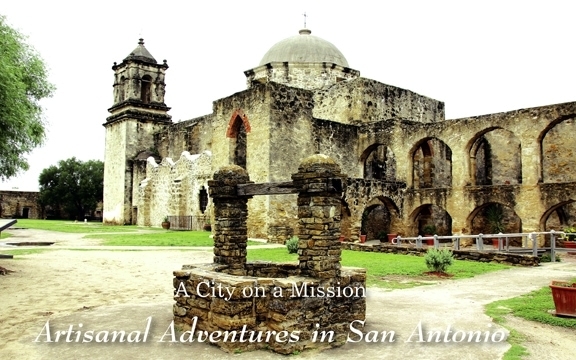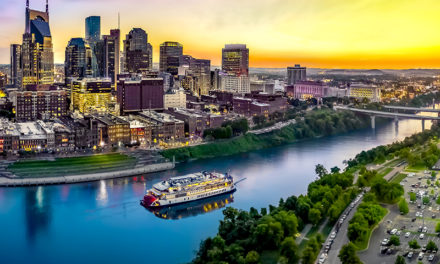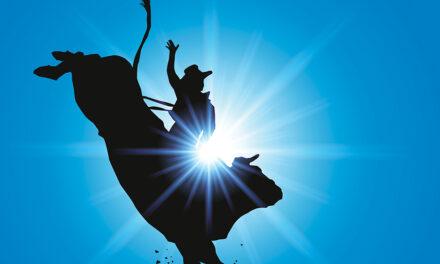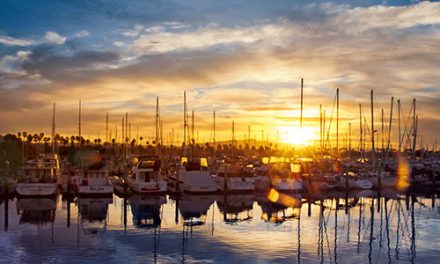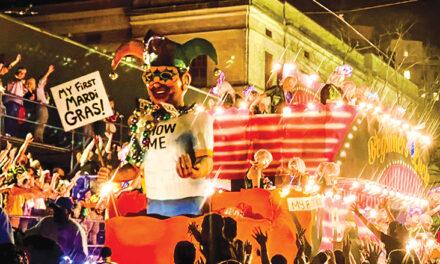USA
A City on a Mission: Artisanal Adventures in San Antonio
Article & Photography by Steve Gillick

Tom Castanos stands waste deep in what he refers to as the Mother Ditch and explains that because of this irrigation canal or ‘acequia’ the city of San Antonio is here today. Using technology from the Moors who invaded the Iberian Peninsula in 711, the Spanish used a system of boards to block and unblock smaller ditches connected with the main canal in order to irrigate their fields in the New World in the early 1700’s. This was the technological equivalent of the ipad and it totally revolutionized the ability of in-land settlements to thrive and grow.
And with the ability to channel water 2 ½ miles from the San Antonio River, the four Missions began the melding of Spanish and Native American culture that is so apparent in the city today.
But beware! If you brand everything in San Antonio as ‘Tex-Mex’ you may receive some incredulous stares and even a few ‘corrective’ suggestions. San Antonio, one of Texas’ most attractive destinations, has steadfastly followed the artisanal path that began in the 18th Century, at a time when necessity was the mother of invention, and continues to this day in the trendy districts that include King William, the Pearl Brewery, Riverwalk and even at Culinaria, the renowned, annual Food and Wine Festival.
In San Antonio’s King William Historic District, Chef Justin Richardson of Brigid talks about ‘informal elevated cuisine” and then wows us with an Asian Fusian/Texas Bistro/Mexican sampler menu of Baby Octopus with Wakame Salad and Wasabi, chicken fried quail, short rib with pappardelle pasta, fried green tomatoes and seared striped sea bass, paired (for those who love craft beers) with Black Butte Porter from Oregon. We only questioned Justin’s veracity when he suggested that the incredible dessert of Mango Bavarian Cream with coconut cream, crumble and fruit, with sprinkles of walnut, pecan and pumpkin seeds, only had two calories!
Afterward Justin became a bit philosophical about his role as a millennium-age chef (under 30) as part of a growing group of younger chefs who talk about collegial and fraternal relationships with their peers, rather than the hyper-competitive atmosphere that chefs of another generation seem to celebrate. He noted that millennium chefs see their work in terms of passion (“true passion is starting the day with your heart pumping and your mind ready to go, and then being unafraid to stand for 12 hours”) and inspiration (“I want to have a legacy of chefs working after me—when the students become masters, then I’ve done my part”).
And as for Tex-Mex? Justin spoke about the true influences on San Antonio’s food scene in the context of the year 2016, as stemming from Latin and Central America as well as Asia. He suggested that Texans have a maverick mentality—they like to go their own way and be creative. And he also noted that while the King William District was hugely popular for restaurants and cultural activities, so was the neighbouring “So Flo” area (South of Flores Street, also called Southtown) where artists and art galleries proliferate along with a showcase of Indian, Thai, Japanese and Chilean restaurants, all specializing in locally sourced produce.
And the growing “locavore” movement, people looking for locally produced products, has infiltrated the craft beer industry. At the Alamo Brewing Company, James Hudec the Brewmaster suggested that we have a drink before the tour so we could relate to what he was about to show us. He mentioned that San Antonio used to be a mecca for brewing in the 19th century with over 30 independents, but the numbers kept declining, so much so that in 1933 when Prohibition ended, only two breweries remained: Pearl and Lone Star.
But the intense interest in local products and the Texas tradition of having a good time, has resulted in a new initiative. “Wine drinkers have it easy. They take grapes and make wine and if it is goes bad they blame it on the grapes”. Craft beer drinkers prefer an artisanal product, made under the watchful eyes of a passionate brewmaster. Mass -produced beers, those that offer ‘dumbed down’ tastes, just can’t offer the same product. And craft beers don’t have to be complicated. “Like Texans, our beers are ‘please, howdy, thank you, ma’am’.
In San Antonio there is no better expression of the artisanal drive than in the Pearl Brewery Complex. This slogan of the district boasts “Local Flavour Since 1883” based on the Brewery founded in that year. It would eventually became the largest brewery in the state of Texas, only to experience periods of growth and decline, and eventually closure in 2001.
But in recent years the old buildings have returned to life. The Hotel Emma has become one of the hottest places to stay in the city, the Farmer’s Market is a draw for coffee drinkers and food shoppers, the restaurants are ‘line-up only’ and the San Antonio campus of the Culinary Institute of America (CIA) is smack in the middle of everything.
We experienced a cooking class with Chef Zach Garza who spoke about “El Sueno”—the dream that he defined as “doing what I love every day and sharing my dream with the next generation”. As executive Chef of Nao (pronounced “Now”) Gastropub around the corner from the Culinary Institute where Zach is also an instructor, he echoed the artisanal mantra. He spoke about Pan-Latin ‘inspired’ dishes (“Just because you put avocado and cumin on it, doesn’t make it Mexican”), and the need to keep things clean and simple, with simple preparation. Zach suggested that we “let the ingredients speak for themselves” and then he prepared a beet salad that was sweet and crunchy with a bit of a zing, followed by Peruvian-inspired potato dish with hot peppers, purple olives and heirloom tomatoes on a drizzle of huancayo sauce.
When we weren’t touring San Antonio’s neighborhoods we were enjoying the amenities and the ambiance at La Cantera Resort and Spa, a five star property, where the Culinaria Festival took place. With the emphasis on local, sustainable produce and artisanal food and drink, the themed events included “Back to Bubbles” featuring wines and champagnes, and “Tacos and Talk” where Tequila and Mezcal drinks as well as cocktails were featured as a complement to modern takes on traditional Latin food (e.g. Lemon Curry BBQ Shrimp Tacos). And after the upscale “Grand Tasting” evening, a final “Burgers, BBQ & Beer” afternoon event emphasized the incredible variety of burger enhancements available, from blue cheese, to brisket, to onion rings, to mac and cheese.
And no trip to San Antonio would be complete without a visit to the iconic Riverwalk on the banks of the San Antonio River. Cafes, restaurant’s historic houses, stone arched bridges, colourful flowers, picturesque trees, souvenir shops, tourist boats, and museums contribute to the relaxed, ‘leave your cares at home’ atmosphere of the area.
After a dinner cruise up the river (more eating and drinking!) we assembled in front of the historic 18th Century San Fernando Cathedral, to watch The Saga, an exciting and moving sound and visual experience that celebrates the history of the city, projected onto the façade of the Cathedral.
San Antonio, a city that literally started on a Mission, is still on a mission to stay true to the needs, trends and wants of locals and visitors alike. It’s no surprise that the 26 million who visit the city annually for the foods, drinks, locals, attractions, history, and festivals, find the ambiance of excitement and energy to be irresistible.
www.vistitsanantonio.com
Click on cover to view published article

